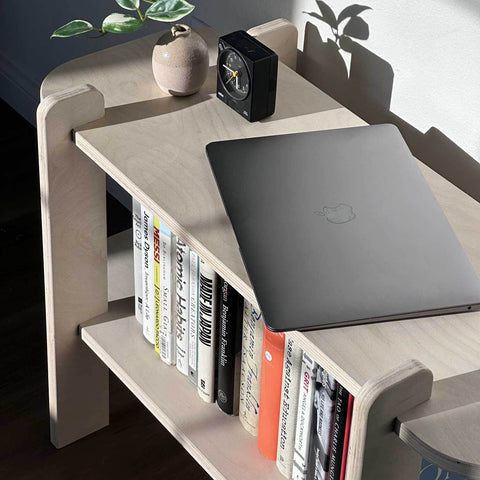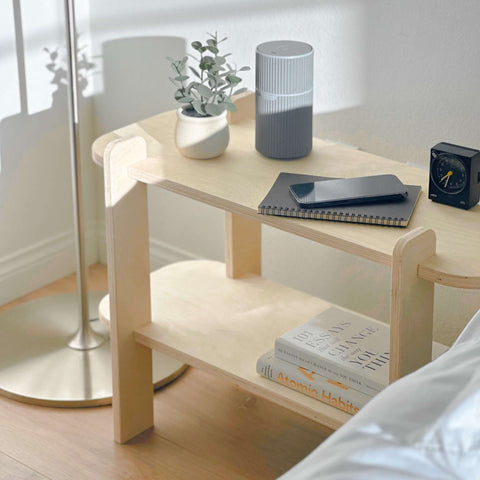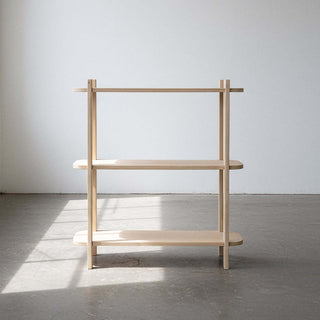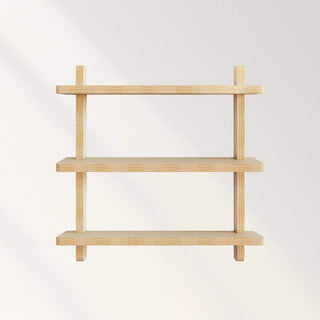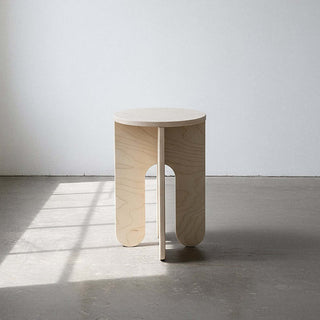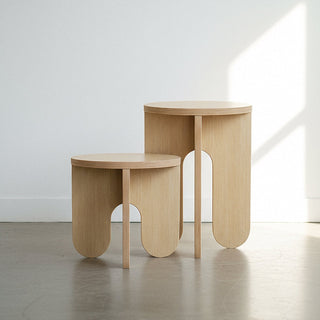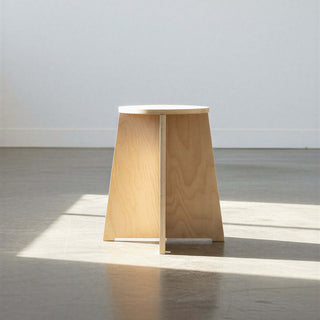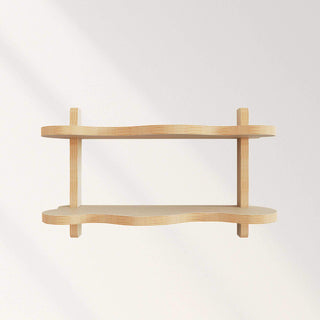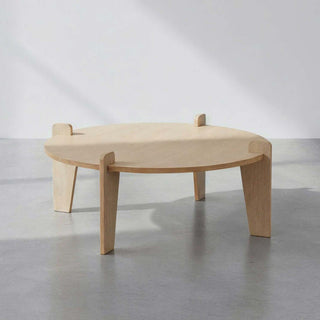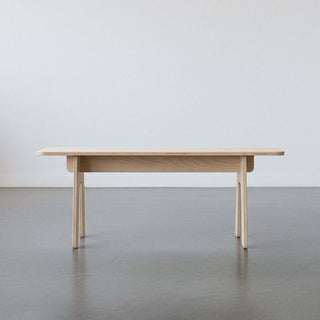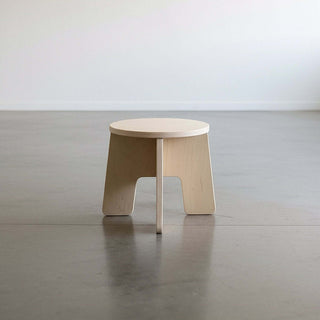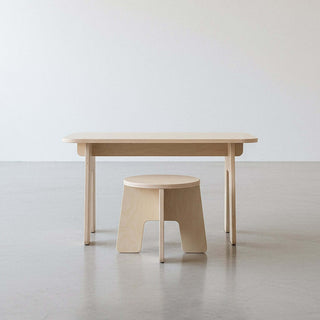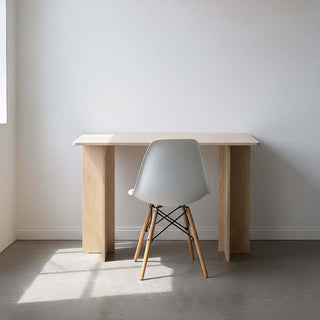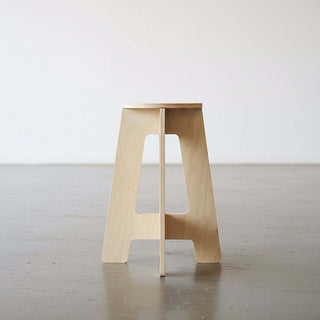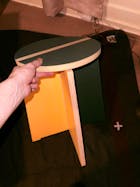Introduction
In the annals of design and construction, few materials boast a story as rich and as transformative as plywood. From its ancient origins to its indispensable role in modern sustainable design, plywood's journey is a testament to human ingenuity. At unfnshed, we embrace this legacy, crafting furniture that's not just built but thoughtfully designed with high-quality furniture-grade plywood, embodying both function and form. But to appreciate the material's present and future, one must first explore its past. So, when was plywood invented, and how has it evolved to become a cornerstone of contemporary design?
The Invention of Plywood: An In-depth Look
Early Beginnings
The roots of plywood in ancient civilizations are not merely a testament to the material's long-standing utility but also to the ingenuity of early artisans who recognized the potential of layered wood construction. In Egypt, the use of laminated wood was primarily for furniture and small boats, a practice that showcased the early understanding of how layering could enhance the structural integrity and durability of wood products. Similarly, in China, the technique was employed in the crafting of more intricate objects, including musical instruments and elaborate boxes, indicating a sophisticated appreciation for the material's versatility. These early applications of laminated wood were precursors to modern plywood, highlighting a universal quest across cultures to innovate and improve building materials.
This ancient lineage of plywood is remarkable, considering the limited tools and resources available to these early civilizations. The process of creating laminated wood, although primitive by today's standards, involved a level of craftsmanship and foresight into the material's capabilities that is truly impressive. The adhesive materials used, derived from natural substances like animal glues and plant resins, were applied to bond layers of wood long before the chemical adhesives of the 20th century were developed. This method of construction not only maximized the use of available resources but also led to the creation of objects that were lighter, stronger, and more resistant to warping than solid wood could provide.
The enduring legacy of these ancient techniques underscores the fundamental principles of plywood manufacturing that remain relevant today: strength, efficiency, and adaptability. As we delve into the history of plywood, it becomes clear that the material's evolution is deeply intertwined with human innovation, a continuous effort to push the boundaries of what is possible with wood. This ancestral knowledge, passed down and refined through millennia, forms the foundation of our modern understanding of plywood, bridging the past and present in the ongoing narrative of material science and design.
19th Century Innovations
The journey of plywood through the 19th century is a compelling chapter in the history of material innovation, set against the backdrop of the industrial era—a time of profound technological advancements and shifts in manufacturing paradigms. The story of plywood's evolution during this period is marked by significant milestones that propelled it from a rudimentary concept of laminated wood to a cornerstone of industrial-scale production.

In 1858, a pivotal moment occurred when John K. Mayo was granted a patent that would lay the groundwork for modern plywood. Mayo's patent wasn't just an incremental step; it was a visionary approach to wood manufacturing, proposing the lamination of thin wood layers at various angles to enhance the material's strength and stability. This method anticipated the core principles of plywood manufacturing, though the technology and processes at the time were not yet fully developed to bring his vision to widespread reality.
The true revolution in plywood production, however, was on the horizon, thanks to Immanuel Nobel, the father of Alfred Nobel. Immanuel Nobel's invention of the rotary lathe towards the end of the 19th century was nothing short of transformative. The rotary lathe introduced a method for the continuous peeling of a log, a technique that produced long, thin veneers of wood from a single piece of timber. This process was revolutionary, as it allowed for the efficient utilization of wood, reducing waste significantly. Before this invention, the production of thin wood layers was laborious and inefficient, limiting the potential applications of laminated wood.

Nobel's rotary lathe changed the landscape of wood manufacturing. With the ability to produce thin veneers consistently and efficiently, it became feasible to layer and glue these veneers together, creating plywood on a scale and at a cost that was previously unimaginable. This innovation did not just make plywood more accessible; it opened new avenues for its application across various industries. The advent of the rotary lathe marked the beginning of plywood's transition from a craft-based production to an essential material in industrial manufacturing.
The implications of these advancements were profound. Plywood, now more affordable and widely available, began to find its place not only in traditional woodworking and construction but also in the burgeoning fields of aviation, automotive manufacturing, and later, in furniture design. The efficiency of the rotary lathe also meant that plywood could be produced with less environmental impact, a consideration that, while not as prominent in Nobel's time, has become critically important in today’s context of sustainability and resource conservation.
Moreover, the development of the rotary lathe and the concept of laminated wood veneers laid the foundation for further innovations in adhesive technologies, which would, in the 20th century, greatly expand the applications and durability of plywood. This period of innovation in the 19th century, therefore, not only revolutionized the production of plywood but also set the stage for its enduring role in modern manufacturing and design.
As we reflect on these historical milestones, it becomes clear that the advancements in plywood manufacturing were not merely technical achievements but were also indicative of a larger shift towards efficiency, sustainability, and versatility in materials science. These developments underscore the legacy of innovation that companies like unfnshed continue to build upon, leveraging high-quality furniture-grade plywood to craft designs that are as sustainable as they are beautiful.
Plywood Through the Ages: From Utility to Art
World Wars Era
Plywood's versatility and strength made it an invaluable resource during both World Wars. It was used in everything from the construction of aircraft and boats to makeshift hospitals and barracks. This period underscored plywood's durability and lightweight nature, qualities that would soon make it a favorite in peacetime industries.
The Rise in Commercial and Domestic Use
In the aftermath of World War II, plywood experienced a surge in popularity that transcended its traditional utility-focused role. This period marked a significant shift as designers and architects delved into the material's versatile properties, sparking a transformative phase in the mid-20th century known as the modernist design movement. Plywood emerged as a central element in this era, embodying the ideals of modern efficiency and the elegance of aesthetic simplicity. Its ability to be molded into various shapes and forms allowed for innovative designs that challenged conventional notions of structure and style. Consequently, plywood was not only celebrated for its practical applications but also revered as a medium that could bring the principles of modernist design to life, making high-quality design accessible to the masses.
The Eames Influence
The impact of Charles and Ray Eames on the perception and application of plywood cannot be overstated. Their exploration into the material's potential went beyond mere experimentation; it was a redefinition of what furniture could be. By embracing the malleability and strength of plywood, the Eameses embarked on a journey of design that would culminate in pieces not just of utility but of art. Their work in the mid-20th century, particularly with the Eames Lounge Chair, showcased plywood in a new light, transforming it from a material considered suitable only for utilitarian purposes into a medium for luxury and comfort. This chair, with its sleek curves and inviting silhouette, became more than a piece of furniture; it was a statement on design philosophy, blending the modern with the natural, and functionality with aesthetic appeal.

This paradigm shift introduced by the Eameses laid the groundwork for future designers to view plywood not as a limiting material but as a canvas ripe with possibilities. The techniques they developed for molding plywood—using heat and pressure to curve and sculpt the wood into desired shapes—opened up new avenues in furniture design, allowing for the creation of pieces that were previously unachievable. It wasn't just about making furniture; it was about pushing the boundaries of conventional design to create pieces that could serve as the focal point of a room, pieces that were as much sculptures as they were seats or tables. Their approach went beyond the physical properties of plywood, tapping into its potential to influence the ambiance and aesthetic of spaces, from homes to offices, and public spaces.

The legacy of the Eameses in the realm of plywood furniture is a testament to their visionary approach to design. They did not just use plywood; they celebrated it, elevating it to a material of elegance and sophistication. This legacy continues to inspire designers and manufacturers today, including those at unfnshed, who see in plywood the same potential that Charles and Ray Eames did decades ago. Their pioneering work remains a touchstone for innovation in design, proving that with creativity and ingenuity, even the most humble materials can be transformed into works of extraordinary beauty and function.
Exploring Plywood Types and Their Uses
Plywood is not a one-size-fits-all material. From softwood and hardwood to marine and aircraft plywood, each type serves distinct purposes. Softwood plywood, often used in construction, offers strength and flexibility. Hardwood plywood, prized for its attractive veneer, is a staple in furniture and cabinetry. Marine plywood, designed for moisture resistance, underscores the material's adaptability, even in challenging environments.
The Science and Sustainability of Plywood
Modern plywood manufacturing marries science with sustainability. Advances in adhesives and pressing technology have made plywood production more efficient and environmentally friendly. The focus on sustainable forestry practices ensures that plywood not only meets today's design needs but does so in a way that respects our planet's future.
unfnshed: A Testament to Plywood's Legacy
At unfnshed, our use of plywood is a homage to its storied past and a commitment to its future. Each piece of furniture we create is a dialogue between tradition and innovation, where design meets sustainability. Our dedication to using the highest quality furniture-grade plywood ensures that every item is not just made but meticulously crafted, reflecting the beauty, durability, and environmental consciousness that plywood allows.

Conclusion
The question, "When was plywood invented?" opens a narrative that spans millennia, illustrating humanity's relentless pursuit of innovation. From its humble beginnings to its status as a modern design essential, plywood's evolution is a mirror to our own. At unfnshed, we're proud to contribute to this legacy, creating furniture that honors the material's rich history while embracing the possibilities of sustainable design.

